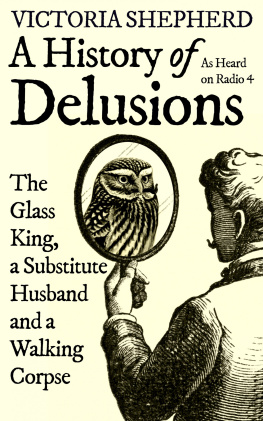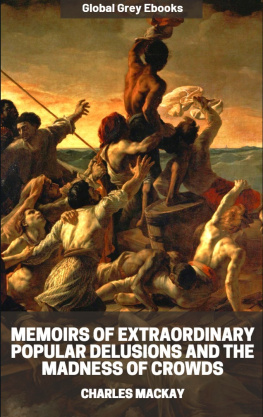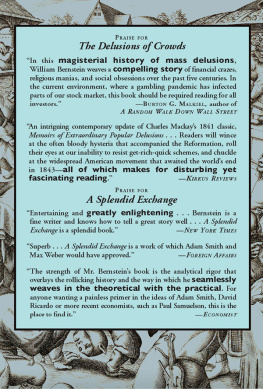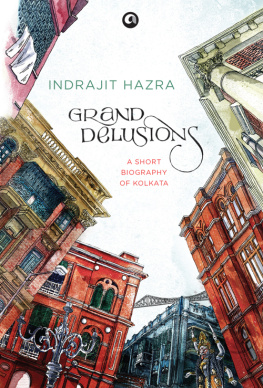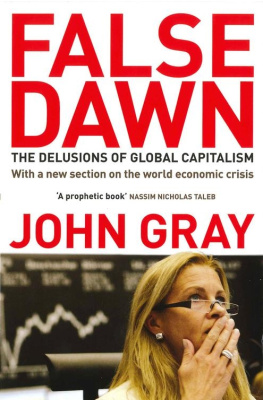In delusions, everything which one wishes and fears may find its level of expression and as far as can be judged by the present state of our knowledge, many other things, perhaps even everything which can be experienced or thought.
Preface
The 1340s, Rouen, northern France, behind a wonky timbered building near the river Seine, at the back of the rear courtyard, a furnace glows fierce orange. A gaffer stokes; he needs it as hot as it can get. He is working on something completely new. It will make his family rich. He is having one last go and he wipes his sweaty brow across the crook of his arm, then shovels out another measure of sand from the bucket into the crucible, and then a measure of ash. He mixes the batch together and pushes it into the roaring furnace. Now he waits for the mixture to heat. The batch turns pale. The temperatures high enough for the reaction. He takes his blowpipe to the furnace. Then he begins gathering up the molten substance like toffee, layer upon layer, until he has an orange globe on the end of the pipe. He puts his mouth to the pipe and blows hard. The globe inflates. He thrusts it back in the fire and starts to spin, watching as centrifugal forces push it out into a flat disk bullion. Now he carefully detaches the bullion from the blowpipe. In the middle of the disc, a bullseye marks the point where the pipe joined the gather. Around the bullseye the material is thinner and can be cut into diamonds for use in windows. Thats the stuff hes interested in. It looks good so far, but hes had his hopes up before. He watches it cool. The sand begins to lose its crystalline structure and gain an entirely new one on a molecular level somewhere between a liquid and a solid. It will be hard like the more primitive version, but, if he can perfect it, there will be a key difference He steadies his hand and lifts it up to inspect. Theres the workshops crooked roofline clean against the sky; the workbench; his shoes. No need to squint, theres no milky blur. Its clear. It will bring a breathtaking new sharpness to windows. People may even want it to magnify objects. The gentry will love it. They will flock to Rouen and buy as much of it as he can make. He pauses. Its struck him that this will change more than the weight of his purse. It will transform the way people see the world.
The introduction of this innovative product, manufactured from what seemed an almost alchemical process sand transformed through fire into something fragile and transparent did have a profound impact on some parts of French society. The wealthy and noble classes enjoyed this new crown glass in their own homes and they carried it carefully, tapped it gingerly, looked through it with wonder, saw what happened if dropped.
Theres a twist. The effect was stranger than the Rouen glassmaker could possibly have imagined. Crown glass did indeed alter the way people saw the world, but it wasnt by virtue of the clarity of the view through the new windows. The transformative power of this material, its alchemy, was continuing to work on the people who had brought it into their homes. It was infiltrating them, influencing them at a deeper level. It was changing how they saw themselves . A few started to believe the chemical reaction was at work within their own body. Something was happening to their legs, their arms, their feet They were turning into glass. Bits of them were now made out of it; translucent, brittle, fragile. Here was a startling example of how external processes might affect inner processes and create a delusion to moderate a persons relationship with the world.
A fifteenth-century French king, Charles VI, made the phenomenon famous. He underwent his own glassy metamorphosis in front of alarmed courtiers. Pope Pius II recorded in his chronicles that Charles had iron rods sewn into his clothes to prevent his glass bones breaking if he touched someone, and he is reported to have wrapped himself in blankets to protect against the danger of shattered buttocks. We can picture him locked in the attrition of the Hundred Years War, yet privately consumed with anxiety about any hard surfaces which might come into contact with his rear end and frantically sourcing prophylactic soft furnishings. News of his belief leaked out and he offered the courts of Europe a good laugh, but it was nervous laughter. He had set off a chain reaction of Glass Men across the continent.
Glass delusion, as the condition became known, is just one of the strange and compelling psychological phenomena that the history of delusions offers up to us.
The content and context of delusions change, era to era, person to person, over the centuries but common features remain. Delusions carry painfully insistent demands, and, for the person experiencing the delusion, the stakes are invariably high. They are often life and death. Charles VI orders his associates to back off he will smash into pieces if they touch him. Its an absurd premise, but beneath the absurdity the perceived jeopardy is painfully real. If you pay closer attention to each of these historical accounts, you can pick up a series of urgent communiqus. Each story then takes on a quality of a psychological thriller for the audience. What does this person need us to know? Can we understand?
Cases of delusion often have the quality of a parable or fairy tale; of Once upon a time They are peculiar, cryptic, their meanings encoded. As with fairy tales, the themes inside these little stories are perennial: God, money, love, power, the reversal of fortune, death. Delusions are an imaginative space and people experiencing them appear to go through the looking glass into alternative universes, like Lewis Carrolls Alice climbing into Wonderland. When you pay closer attention to accounts of delusion from the past, however, you sense that there is something else at work. A delusion begins to seem more everyday and pragmatic a psychological survival technique in action. Delusions may look like a retreat into the fantastical but in a key sense the opposite is true. These are not flights of fancy away from reality; they are a strategy to deal with reality. Unlike fairy tales, delusions are for grown-ups.
Introduction
A delusion is broadly defined as a fixed, false idea, not shared by others, unshakable in the face of decisive evidence contradicting it.
Where do delusions come from, and what do they mean? After all, it requires a considerable amount of imaginative work to create an alternative reality, and then heroic efforts to keep that reality going in the face of others that is, everyone else who dont share the same belief; who might even laugh at you, for having glass feet or a glass rear end. Its an intriguing question.
Its not a static situation; weve changed how weve thought about them over the centuries. In the classical world it was an imbalance of humours, later demonic possession, then organic brain disease.
A more consistent feature is how subjects cling onto their delusions, seemingly for dear life. What do delusions offer that is worth the trouble? What kind of help or protection?
Delusions are only just starting to emerge as a field of study in their own right. Accounts over the centuries offer us peepholes into this historically overlooked area of everyday human experience. They were typically written up as curios, or marvels of the mind, but theres more to know about these individuals in context, following each path through their daily lives; along the streets they walked, coming in and out of the shadows, glimpses of real human lives, struggles and powers of imagination. Can we spot traces of the route taken, how each managed to make a living, navigate love affairs and marriages, the birth and death of children, illness, wars or political or religious disorder, their sense of the future? Will their delusions become more understandable?

